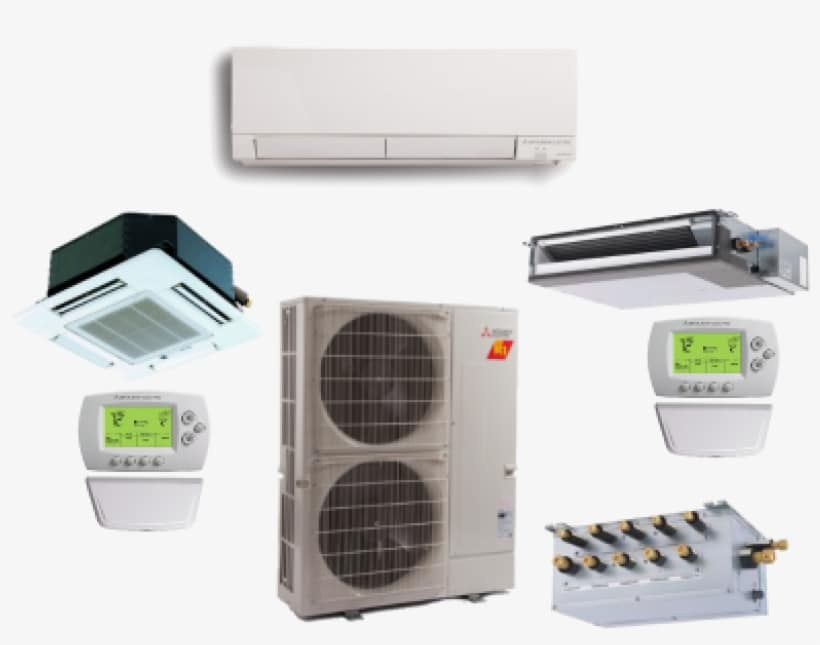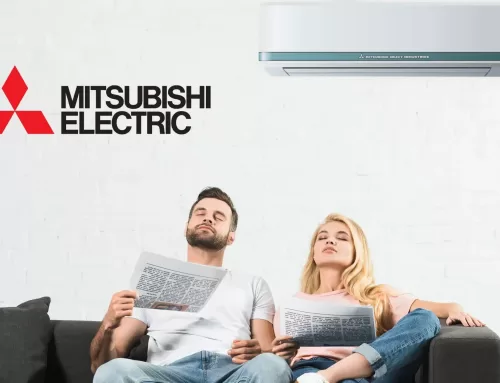New York State is embarking on an ambitious plan to combat climate change, and a significant step in this direction was taken recently. The state committee approved plans that aim to phase out fossil fuel-burning furnaces as early as 2025, aligning with their climate action goals. According to the proposal approved by the state Climate Action Council, all new homes constructed in 2025 and beyond must be equipped with energy-efficient electric heat pumps or other non-combustion heating systems. This forward-looking initiative signifies a crucial shift towards sustainable and eco-friendly heating solutions.
Beyond 2030, there’s another noteworthy provision in the plan. Homeowners using fossil fuel-based heating systems will be required to replace them with emission-free alternatives if these units break down. These measures are part of a comprehensive 445-page plan adopted by the state Climate Action Council, a 22-member commission comprising leaders from state agencies, environmental experts, and energy industry leaders.
While some of the policies in the “final scoping plan” may require further action, such as updating the state building code and potentially enacting new laws, this plan now serves as the official policy for achieving greenhouse gas reduction objectives mandated by a 2019 state legislation. According to Robert Howarth, a professor at Cornell University and a council member, state policies must align with the council’s recommendations, with agencies scheduled to begin implementing the plan shortly.
As New York gears up for a housing boom driven by employment opportunities in semiconductor fabs, energy-efficient heating solutions like electric heat pumps are expected to play a pivotal role. While currently, only a small percentage of homes use high-efficiency heat pumps, the Climate Action Council’s plan envisions a significant transition. By 2030, it anticipates that one to two million of the state’s 6.1 million buildings will adopt this technology, a substantial shift from the current reliance on natural gas, propane, or fuel oil for heating.
Transitioning to electric heat pumps not only aligns with the state’s climate goals but also offers numerous benefits. Despite higher initial installation costs, heat pumps often have lower long-term operating costs compared to traditional furnaces. They are also known for promoting better indoor air quality and health, as they do not rely on combustion, which can be linked to respiratory issues. While electric heating already accounts for about 18% of homes in Onondaga County, the adoption of more efficient electric heat pump technology is poised to drive sustainability and reduce carbon emissions, making it a significant and beneficial shift for New York.
In the broader context, these policies are part of New York’s commitment to reducing greenhouse gas emissions by 40% by 2030 and 85% by 2050, compared to 1990 levels, as mandated by the Climate Leadership and Community Protection Act of 2019. Buildings are responsible for a significant portion of the state’s carbon emissions, making the transition to heat pumps and other high-efficiency, zero-emission heating systems a pivotal step in mitigating climate change. With the approval of this comprehensive climate action plan, New York is poised to reshape how buildings are heated and, in doing so, contribute significantly to its ambitious climate goals.
How Mitsubishi Heat Pumps Will Thrive in Sustainable and Eco-Friendly Heating Solutions
The transition towards more sustainable and eco-friendly heating solutions, such as electric heat pumps, in New York presents a promising opportunity for Mitsubishi Heat Pumps to thrive and expand their presence in the market. Here are several ways in which Mitsubishi Heat Pumps can benefit from this transition:
- Increased Demand: As New York State mandates the use of energy-efficient electric heat pumps or non-combustion heating systems in new constructions, the demand for such systems is expected to soar. Mitsubishi Heat Pumps, known for their energy efficiency and advanced technology, are well-positioned to meet this rising demand.
- Product Innovation: Mitsubishi Electric has a history of innovation and improvement in its HVAC systems, including heat pumps. As the market for electric heat pumps expands, the company can continue to innovate and develop new, high-performance models that meet the specific needs of New York homeowners and builders.
- Environmental Responsibility: Mitsubishi Electric’s commitment to environmental responsibility aligns with New York’s climate goals. Their heat pumps produce fewer greenhouse gas emissions compared to traditional fossil fuel-based heating systems. This environmental consciousness can resonate with consumers and businesses aiming to reduce their carbon footprint.
- Financial Incentives: The state of New York is likely to implement financial incentives to encourage the installation of heat pumps. Mitsubishi Heat Pumps can benefit from these incentives, making their products more affordable and attractive to consumers.
- Public Awareness: With the state’s emphasis on transitioning to sustainable heating solutions, public awareness of the benefits of heat pumps is likely to increase. Mitsubishi Electric can leverage this heightened awareness to educate consumers about the advantages of their products and establish themselves as a trusted brand in the market.
- Partnerships and Installations: Mitsubishi Electric can collaborate with contractors, builders, and developers in New York to ensure that their heat pumps are included in new construction projects. This strategy can help them gain a strong foothold in the market.
- Adaptability: Mitsubishi Heat Pumps are known for their adaptability to various settings and climates. This adaptability makes them suitable for both residential and commercial applications, allowing the company to tap into a broader range of opportunities as the transition progresses.
In summary, the transition towards electric heat pumps and sustainable heating solutions in New York offers Mitsubishi Heat Pumps an excellent growth opportunity. By aligning with the state’s climate goals, continuing to innovate, and promoting their products’ environmental benefits, Mitsubishi Electric can thrive and establish itself as a leading provider of energy-efficient heating and cooling solutions in the region.
Mitsubishi Heat Pumps VS Traditional HVAC Systems
Mitsubishi Heat Pumps and traditional HVAC (Heating, Ventilation, and Air Conditioning) systems differ significantly in their technology, efficiency, installation, and operation. Here are some key differences between the two:
1. Technology and Operation:
- Mitsubishi Heat Pumps: Mitsubishi Heat Pumps, specifically ductless mini-split systems and air-source heat pumps, operate on the principle of heat transfer. They extract heat from the outdoor air (even in cold weather) and transfer it indoors for heating. During cooling, the process is reversed as they remove heat from indoor air and release it outdoors. They do not rely on combustion and are considered highly energy-efficient.
- Traditional HVAC Systems: Traditional HVAC systems typically consist of a furnace or boiler for heating and a separate air conditioner for cooling. Heating is achieved through combustion of fossil fuels (natural gas, oil, or propane) in a furnace or by heating water in a boiler. These systems require separate ductwork for air distribution, and they rely on the burning of fuel to generate heat.
2. Efficiency:
- Mitsubishi Heat Pumps: Mitsubishi Heat Pumps are known for their high efficiency. They can provide more heating or cooling energy than the electricity they consume, thanks to technologies like inverter-driven compressors. They are particularly efficient in moderate climates but are also effective in cold weather, especially with models equipped with hyper-heating technology.
- Traditional HVAC Systems: Traditional HVAC systems vary in efficiency depending on the type and age of the system. Older systems tend to be less efficient. Additionally, traditional systems with ductwork can suffer from energy losses through leaks and poor insulation.
3. Installation:
- Mitsubishi Heat Pumps: The installation of Mitsubishi Heat Pumps, especially ductless mini-split systems, is generally easier and more flexible compared to traditional HVAC systems. They do not require extensive ductwork, making them suitable for retrofitting older homes and for new construction. Indoor units are mounted on walls or ceilings, and they can be zoned for individual room control.
- Traditional HVAC Systems: Installing traditional HVAC systems with ductwork can be more labor-intensive and expensive, especially in existing homes without existing ducts. The installation process may require more space for ducts, vents, and a central furnace or air handler.
4. Zoning:
- Mitsubishi Heat Pumps: Mitsubishi Heat Pumps, particularly ductless mini-splits, offer zoning capabilities. Each indoor unit can be controlled separately, allowing for customized temperature settings in different rooms or zones. This improves energy efficiency by heating or cooling only the areas in use.
- Traditional HVAC Systems: Traditional systems with ducts have limited zoning capabilities. Zoning requires additional equipment and ductwork modifications, making it less common and more expensive to implement.
5. Environmental Impact:
- Mitsubishi Heat Pumps: Mitsubishi Heat Pumps produce fewer greenhouse gas emissions compared to traditional HVAC systems, especially if the electricity source is relatively clean. They contribute to a lower carbon footprint and align with sustainability goals.
- Traditional HVAC Systems: Traditional HVAC systems that rely on combustion emit greenhouse gases and air pollutants, contributing to environmental concerns and health risks.
In summary, Mitsubishi Heat Pumps offer energy-efficient, flexible, and environmentally friendly alternatives to traditional HVAC systems. Their ability to provide both heating and cooling efficiently makes them a compelling choice for modern homes and businesses, particularly in regions with varying climate demands. However, the choice between the two depends on individual needs, budget considerations, and the existing infrastructure of the building.







Leave A Comment